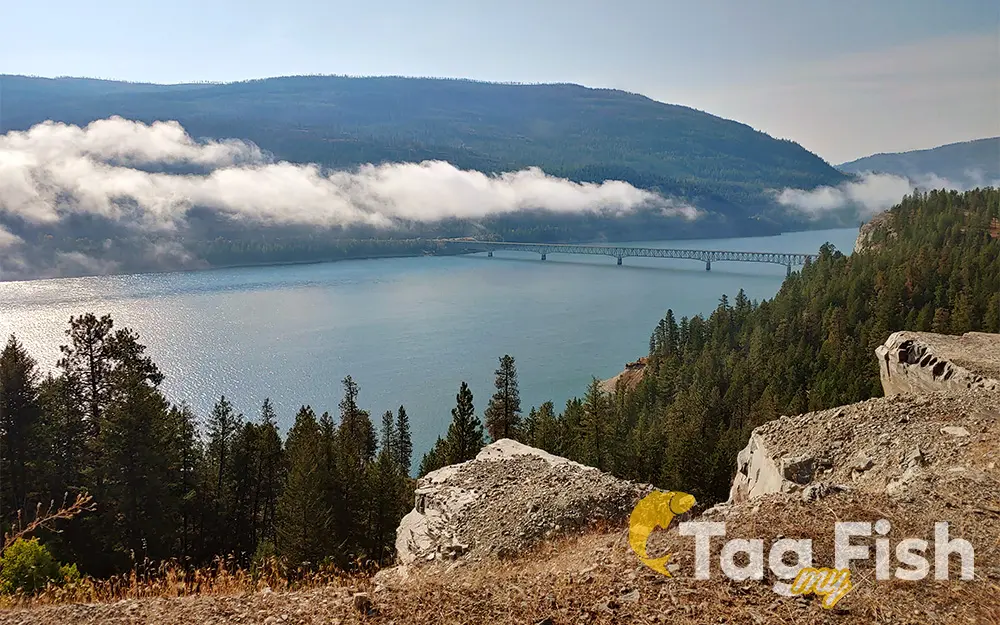Lake Koocanusa

General data
- Name: Lake Koocanusa
- Water system: Columbia River
- Water type: Artificial lake
- Progression: Kootenay River -> Columbia River -> Columbia River Estuary -> Pacific Ocean -> Planet Earth
- Climates: Continental
- Continents: North America
- Countries: Canada, United States of America
Lake Koocanusa is a reservoir in British Columbia (Canada) and Montana (United States) formed by the damming of the Kootenai River by the Libby Dam in 1972. The Dam was formally dedicated by President Gerald Ford on August 24, 1975. The lake is formed north of the dam, reaching 48 miles (77 km) to the Canada–United States border and 42 miles (68 km) further into British Columbia. The lake holds 13% of the water in the Columbia River system. The town of Rexford was moved, as well as the Great Northern Railway line. The town of Waldo, British Columbia is now covered by the lake. What was once a barrier to river travel, Jennings Canyon is now inundated by the lake. The Elk River joins the Kootenay River in the northern part of Lake Koocanusa, within Canadian territory.

 English
English
 Spanish
Spanish
 German
German
 French
French
 Serbian
Serbian
 Russian
Russian

